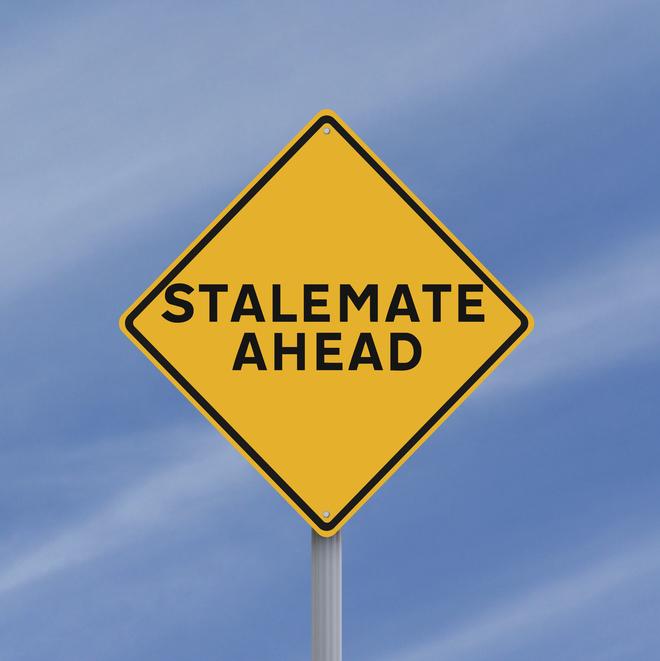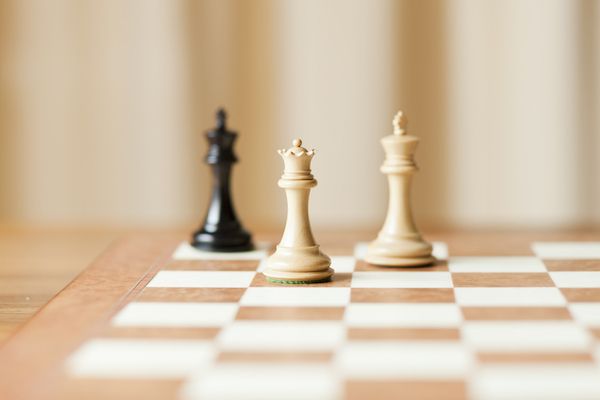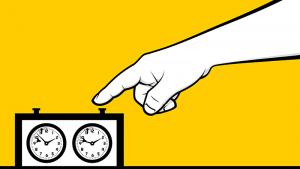
How To Save Yourself With Stalemate
In online blitz chess (and especially in bullet), resignation is largely frowned upon. Indeed, with so little time remaining, there is always a possibility that your opponent will make a disastrous blunder, an unfortunate mouse slip, or — better yet — deliver stalemate in a completely winning position.
As the following game demonstrates, even grandmasters are not immune to various stalemate traps:
More dramatic cases, in which players taunt their opponents by promoting four or five queens only to unintentionally deprive the king of its remaining squares, also occur by the basinful. It is tempting to assume, then, that playing for stalemate (henceforth referred to as the stalemate method) is only possible in casual blitz games, as a last-ditch attempt to save a hopeless position by exploiting your opponent's time pressure.
But this is far from true.
The stalemate method is an effective defensive mechanism in serious games as well; stalemate ideas are frequently used to construct an impenetrable fortress, and stalemate traps are often incredibly hard to sidestep.

The game that inspired me to write this article is a fairly unknown battle between Anatoly Karpov and Vishy Anand. Vishy played a model positional game, eventually blowing Karpov off the board in a queen + bishop vs. queen + knight endgame. In reality, though, the game is far more two-sided than it appears.
What astonishes me is not only the stalemate mechanism itself, but the fact that Black had no way to do anything about it. 6. Qxf6+, a move that almost any human would make instantly, turns out to be the decisive mistake.

Recently, I conducted a very nice sacrificial attack against GM Conrad Holt in the US Chess League. I won back all of the material plus two pawns, and to expedite the winning process, traded into an ostensibly winning pawn ending. But there was one small detail I failed to perceive in my calculations.
Even though I was aware of the possibility of stalemate, I was under the impression that I could force the king out of its cage with a timely a7+. I simply did not imagine that I would not have a single free tempo to do so! Once again, stalemate was the foundation on which Black's entire defense was built.
It is no coincidence that I missed Black's double-pawn sacrifice: it is often surprisingly easy to miss that multiple pieces can be sacrificed to force stalemate.
If your opponent's king is stalemated, but he has a whole army of pieces left, it is tempting to assume that you will eventually be able to sidestep the waterfall of kamikaze sacrifices. But this is not always the case!
If Black's queen was missing in the initial position, I have no doubt that a player of Spence's caliber would have instantly seen ...Rxh3+. Your mind subconsciously refuses to consider a move like ...Qg7+, simply because it would be ludicrous in any other position.
But as soon as your king is stalemated, you must lose your inhibition toward giving up pieces for no apparent reason!
Hopefully, you are beginning to see just how effective the stalemate method can be in actual games.
Stalemate (i.e. the game is drawn of the king has no more squares) is an original concept that does not exist in any other sport or game, so you should exploit it to its fullest extent.
I will leave you with a beautiful and challenging stalemate puzzle. It is one of my favorite studies of all time, and hopefully, a worthy rebuttal to all proponents of eliminating the stalemate rule!
RELATED STUDY MATERIAL
- Read GM Naroditsky's last article, How Fabiano Caruana Wins.
- Watch IM Keaton Kiewra's awesome video series on stalemate tricks.
- Find salvation through stalemate in the Chess Mentor.
- Practice your tactics in the Tactics Trainer.
- Looking for articles with deeper analysis? Try our magazine:The Master's Bulletin.

